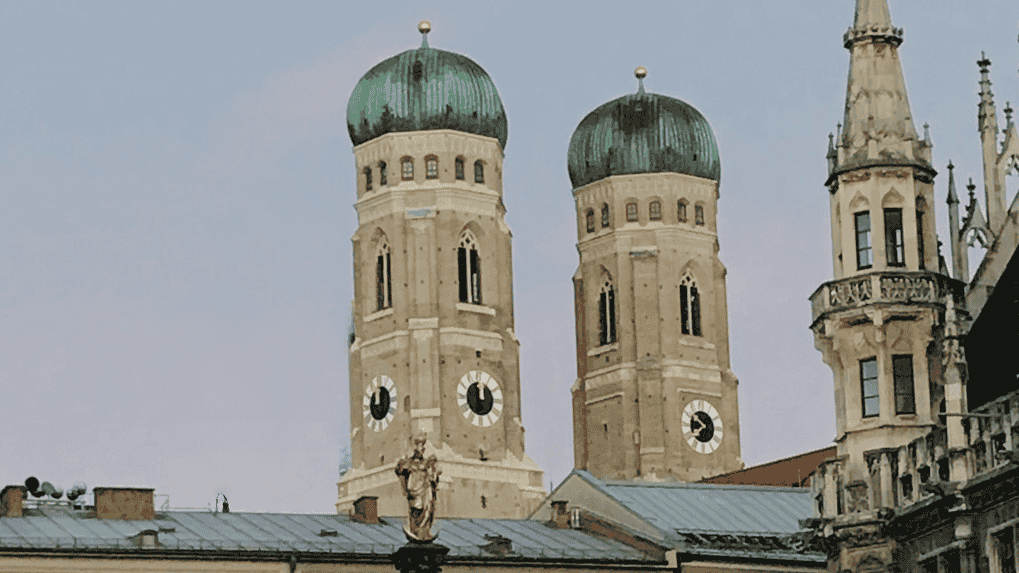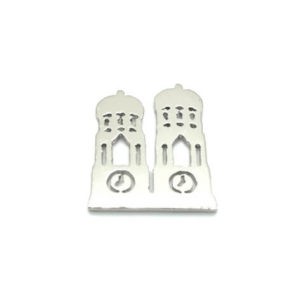Die Frauenkirche liegt im Herzen Münchens, nicht weit vom Marienplatz entfernt. Es ist das bekannteste Wahrzeichen der Stadt und seit 1821 die Kathedralkirche des Bischofs von München und Freising. Sie kam durch ihre Schutzherrin, die Gottesmutter Maria, zu ihrem Namen.
Der Frauendom ist 109 m lang und 40 m breit und 37 m hoch und zeichnet sich im Inneren durch eine Schlichtheit aus, die den Bau besonders imposant wirken lässt. Die Dompfarrei ist die kleinste der Stadt München. Durch die Entvölkerung der Innenstadt wohnen nämlich nur noch etwas über 300 Katholiken im Pfarrgebiet.
Frauenkirche München und ihre Geschichte
1271 wurde die kleine Kirche Zu Unserer Lieben Frau von Bischof Konrad II. erbaut und die Frauenpfarrei gegründet. Als die Bevölkerung Münchens um das 15. Jahrhundert herum explosionsartig wuchs, reichte das bestehende Gotteshaus nicht mehr aus und man beauftragte Jörg von Halspach, den Baumeister des Alte Rathauses, einen angemessenen Neubau zu errichten.
1468 wurde der Grundstein für die Frauenkirche gelegt. Noch heute erinnern zwei Gedenktafeln am Südostportal an diesen Tag. In nur 20 Jahren war der Ziegelsichtbau für 20.000 Menschen fertig, obwohl München im 15. Jahrhundert nur etwa 13.000 Einwohner hatte. Die Turmspitzen fehlten noch. Um die Stadt zu verteidigen, verwendete man die haubenlosen Türme während des Landshuter Erbfolgekriegs als Kanonenstellplatz.1525 wurden schließlich die charakteristischen Welschen Hauben nach dem Vorbild des Felsendoms in Jerusalem geplant und aufgesetzt. Welsch war damals ein Ausdruck für fremdartig, woher auch der Begriff Kauderwelsch rührt.
Luftangriffe im Zweiten Weltkrieg beschädigten den Dom schwer. Er stürzte teilweise ein und auch die meiste Einrichtung fiel Plünderungen zum Opfer. In den Nachkriegsjahren baute man das Wahrzeichen Münchens nach und nach wieder auf. Die letzte umfassende Renovierung wurde von 1989 bis 1994 durchgeführt.
Türme prägen das Stadtbild
Vor allem die Türme der Frauenkirche gelten als das ultimative Wahrzeichen der Stadt. Sie sind weithin sichtbar und das Symbol Münchens. Der 98,45 Meter hohe Südturm ist für Besucher zugänglich und bietet eine wunderbare Aussicht über die Stadt. Er enthält sieben große Glocken, die man beim Aufstieg aus nächster Nähe betrachten kann. Im 98,57 Meter hohen Nordturm sind drei weitere Glocken und außerdem das mittelalterliche Tretrad vorhanden, mit dem man vor 500 Jahren das Baumaterial nach oben beförderte. Um die Türme als Wahrzeichen der Stadt zu schützen, gab es 2004 einen Bürgerentscheid. Dieser beschloss, dass innerhalb des Mittleren Rings keine Gebäude mehr errichtet werden dürfen, die höher als 100 Meter sind.
Der Teufelstritt und seine Legende
Im Eingangsbereich des Hauptportals findet man am Boden den Abdruck eines menschlichen Fußes mit einem Sporn an der Ferse. Über diesen Tritt wird seit dem 17. Jahrhundert folgende Sage erzählt. Als der Frauendom fertig, aber noch nicht geweiht war, schlich sich der Teufel hinein, um den Bau anzuschauen. Er stand an der Stelle, an der bis heute der Fußabdruck ist. Von hier aus sah er keine Fenster, da diese die Säulen verdeckten. Darüber freute sich der Teufel so sehr, dass er auf den Boden stampfte und seinen Fußabdruck hinterließ. Als er einen Schritt weiter ging und die Fenster erblickte, verwandelte er sich vor Zorn in einen Sturm und wollte die Kirche zum Einsturz bringen. Dies gelang dem Teufel jedoch nicht und seither ist immer ein leichter Wind um die Frauenkirche herum zu spüren…
Merken
